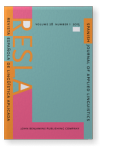Vol. 28:1 (2015) ► pp.17–47
Vol. 28:1 (2015) ► pp.17–47
English syllabic consonants vs. schwa at discourse level
A perceptual analysis
This is a perceptual study on the production of English syllabic consonants vs. schwa in word final position at discourse level. It is intended to find out whether the speaker’s gender, accent, speech rate and emphasis placed upon words have any bearing on the production of this alternation. The effect the aforementioned factors may have on the production of this apparently anarchic phonetic alternation demands further exploration (see, however, O’Shaughnessy, 1981; Byrd, 1994; Wells, 1995; Töft, 2002). The informants for this study were 80 non-rhotic native newsreaders (40 males and 40 females) taken from the BBC learning English website (2009). Three female listeners not knowledgeable about the purposes of the study had to decide whether they perceived a syllabic consonant in certain words (800 overall) or not. Results show that there is a statistically significant relationship between each of these factors and the production of English syllabic consonants vs. schwa.
